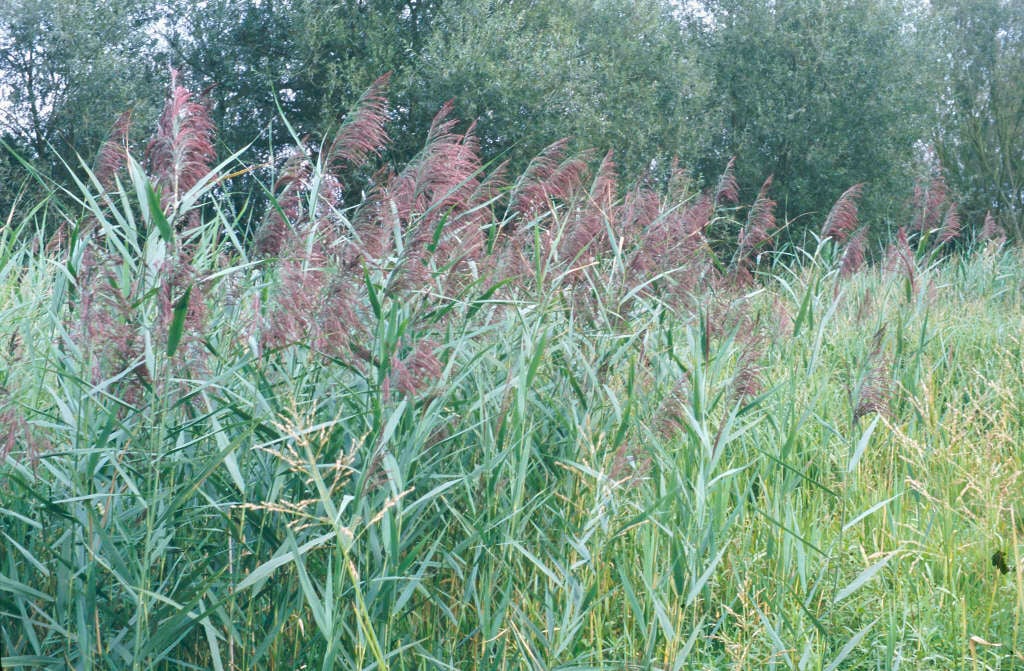Phragmites australis
common reed
A vigorous reed grass to 3m in height, spreading by rhizomes and forming an extensive colony of erect, leafy, robust stems with drooping linear leaves which turn light brown in autumn, and terminal dark purple flowering panicles from late summer

Buy this plant
Size
Ultimate height
2.5–4 metresTime to ultimate height
5–10 yearsUltimate spread
2.5–4 metresGrowing conditions
Moisture
Moist but well–drained, Poorly–drainedpH
Acid, Alkaline, NeutralColour & scent
| Stem | Flower | Foliage | Fruit | |
| Spring | Green | |||
|---|---|---|---|---|
| Summer | Purple | Green | ||
| Autumn | Purple | Brown | ||
| Winter |
Position
- Full sun
Aspect
South–facing or West–facing
Exposure
Exposed or Sheltered Hardiness
H7Botanical details
- Family
- Poaceae
- Native to GB / Ireland
- Yes
- Foliage
- Deciduous
- Habit
- Tufted
- Genus
Phragmites are vigorous rhizomatous perennial grasses with linear leaves and large feathery purple panicles of flowers in late summer
- Name status
Correct
How to grow
Cultivation
Grow in deep, moderately fertile, reliably moist soil in full sun. In riverside, lake or pond areas can be grown in large containers sunk in water to restrict growth and provides ideal habitats for rare and endangered birds. It needs ample space and has the potential to become a nuisance in favourable conditions if not managed well. See aquatic weeds for more information
Propagation
Propagate by division from early spring to early summer
Suggested planting locations and garden types
- Wildlife gardens
- Wildflower meadow
Pruning
Cut back in late autumn or winter
Pests
Generally pest-free
Diseases
Generally disease- free
Get involved
The Royal Horticultural Society is the UK’s leading gardening charity. We aim to enrich everyone’s life through plants, and make the UK a greener and more beautiful place.